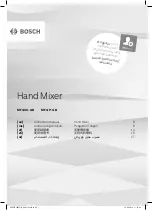
88D User Manual
53
5. Routing
There are two types of routing on 88D:
I/O Routing for connecting (or patching) physical input and output
ports to the appropriate signal paths.
Path Routing for connecting signal paths together to form a clear path
from input to output.
I/O Routing
I/O Routing can be controlled with I/O Patching or from the I/O function on the upper
channel strip.
Path Routing
Path Routing can only be controlled from the console surface. This is done using the
ACCESS keys on the Fader strips or by selecting the path type at the top of the
channel strip and using the routing keys just above them.
Legal routing combinations are as follows:
Channels to Tracks, Groups, Main Outputs and Auxiliaries.
Tracks to other Tracks, Groups, Main Outputs and Auxiliaries.
Groups to Tracks, Main Outputs and Auxiliaries.
Main Outputs to Cues.
Auxiliaries to Cues.
This does not include selections made in the monitoring system (monitoring,
talkback, tone).
The routing software ensures that no feedback loops will occur (e.g. a circular routing
pattern such as routing TK 1 to GRP1, GRP1 to TK 2 and then TK 2 to TK 1).
Whichever step is attempted last in making such a routing pattern is ignored.
I/O Routing from the console surface
All functions of I/O are set from the upper channel strip or the input/output section of
the AFU.
Set the upper channel strip to display either Input or Output as required then turn the
Rack Select and port number logicators to the desired port. Press On/Clear to turn
the port on.
It is possible to have the same input assigned to more than one path. Output ports
can only be assigned to one path.
To activate phantom power turn the 48V key on a line input that is switched to MIC.
The green LED by the fader will illuminate. Phantom power is applied to both A and B
mic input lines.
Содержание 88D
Страница 1: ...88D User Manual 1 ...
Страница 8: ...88D User Manual 8 3 Console Surface ...
Страница 46: ...88D User Manual 46 ...
















































